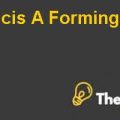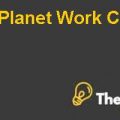QUESTION 1
What are the main issues that ConEd had to face in April 1974? Reason your answers.
There were many problems that were being faced by the Consolidated Edison Company in the April of 1974. If we start from the beginning then the case states that the Consolidated Edison Company charged the highest electricity prices to its customers, the contribution to the air pollution in New York was significantly done in large proportions by the Consolidated Edison Company.
Further, the company is very rude regarding the bargain and along with this the aging system of the company is so inefficient which on annual basis power failures for the 1900 neighborhoods are produced. However, the main issue that was being faced by the Chairman of the company and the Board of the Consolidated Edison Company was that the company now needed to make a final decision regarding the cash dividend which was about to be paid in next quarter and if the decision is made to pay the dividend then how much should be paid.
This was because the company was short of cash and the stock price for the company had significantly dropped. Apart from this, the interest coverage ratio for the company had also dropped significantly and this all showed that the financial performance of the company was getting worse. Further, the company faced massive financing needs for the future. A rate relief increase for the electricity consumption of about $ 315 million was requested by the Public Service Commission.
However, only a temporary increase in the rate relief of about $ 175 million was granted in the year 1974. After that the financing decisions related to the issue of the bonds of $50 million and preferred stocks of $50 million were postponed and the market yield on the bonds increased decreasing the value of the bonds for the company. The confidence of the investors in the company was low, therefore, making a final decision regarding the cash dividend to be paid or not was crucial for the satisfaction and meeting the expectations of the investors.
QUESTION 2
How well positioned is ConEd to leverage the US$2.8 Billion that it needs in the next 5 years? Explain it by showing the calculus.
Currently, the financing situation for the Consolidated Edison Company is proving to be difficult. The company cannot cross the debt limit of 51% of its total capital structure and if the debt in the company’s capital structure is increased significantly above this level then it is going to raise the risk faced by the company regarding the bankruptcy and it is also going to increase the financial distress costs for Consolidated Edison Company.
Running Dead Consolidated Edison Company Case Solution
On the other hand, the management of the company is hesitant to issue further stock and selling stock at a very lower price is proving to be very painful for the company. Therefore, issuing stock at this moment would not be the right choice. The company now needs around $5 million to fund the business and meet its cash needs. The management is keen to show that around $2.2 million of this $5 million would be made from the internal operations of the company; however, the remaining $2.8 million needs to be raised externally.
However, raising externally through the combination of bonds, stock and preferred stock is going to dilute the interest coverage ratio for the company, and issuing stock at such a lower share price does not seems to be logical. Therefore, in order to overcome this problem, the management of Consolidated Edison Company could seek to sale its two partially completed generating plants for $ 500 million and reduce the level of the debt in each of the future years. Therefore, if we consider the free cash flow (net income + noncash charges) as operating income, then the new interest coverage ratios for the future years could be calculated as shown in the table below:
|
EDISON COMPANY FUTURE LEVERAGE CONDITION |
|||||||
|
1974 |
1975 |
1976 |
1977 |
1978 |
Total | ||
| Net Income |
210 |
250 |
280 |
310 |
340 |
1390 |
|
| Non Cash Charges |
140 |
155 |
170 |
190 |
205 |
860 |
|
| Total |
350 |
405 |
450 |
500 |
545 |
2250 |
|
| % | |||||||
| Bond Issues |
224 |
138 |
280 |
310 |
280 |
1232 |
44% |
| Preferred stock issues |
100 |
67 |
72 |
88 |
72 |
399 |
14% |
| common stock issues |
180 |
123 |
127 |
145 |
113 |
688 |
24% |
| Sale of power plants |
500 |
500 |
|||||
| Total Sources |
1204 |
1138 |
1379 |
1543 |
1555 |
2819 |
100% |
| Interest Payments |
23.408 |
14.421 |
29.26 |
32.395 |
29.26 |
128.744 |
|
| Interest Coverage Ratio |
14.95215311 |
28.0840441 |
15.37935748 |
15.43448063 |
18.62611073 |
17.4765426 |
|
Therefore, it could be seen that the interest coverage ratio for the company increases for all the future years to come, therefore, the Consolidated Edison Company could be positioned well from its current condition to raise the required $2.8 million in external financing. .........................
This is just a sample partial case solution. Please place the order on the website to order your own originally done case solution.













